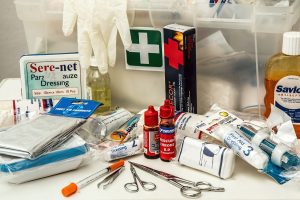
When traveling by car in cold climates, a well-prepared survival kit can mean the difference between an uncomfortable wait for help and a dangerous, even life-threatening, situation. A sudden snowstorm, icy roads, or vehicle malfunctions can leave you stranded and exposed to freezing temperatures. Here’s everything you need in a survival kit to stay safe and warm if your car becomes disabled in a cold climate.
The Essentials: What You Need in Your Cold-Climate Car Survival Kit
Warmth & Shelter Supplies
Thermal Blankets: Space-saving and incredibly warm, thermal (or Mylar) blankets are essential for staying warm.
Extra Clothing: Pack insulated gloves, wool socks, a hat, a scarf, and a waterproof jacket. Layering can make a huge difference in freezing temperatures.
Sleeping Bag: A compact, high-rated winter sleeping bag can help you conserve body heat if stranded overnight.
Hand and Foot Warmers: Disposable hand and foot warmers are inexpensive and can provide hours of warmth.
Food and Water Supplies
Non-Perishable Snacks: High-calorie, non-perishable foods like granola bars, nuts, dried fruits, and jerky provide necessary energy.
Water: At least one gallon of water per person. In cold climates, it’s essential to insulate water bottles to prevent freezing.
Camping Stove or Portable Heater: In extreme cases, a small camping stove can be used to heat water or cook food. Ensure proper ventilation if you’re using a portable heater.
Light and Communication Tools
Battery-Powered or Hand-Crank Flashlight: Keeping a flashlight with spare batteries or a hand-crank model can be invaluable in the dark.
Headlamp: A headlamp frees up your hands, making it easier to perform tasks if you’re working on your car or gathering supplies.
Portable Phone Charger: A fully charged power bank is crucial for staying connected.
Whistle: A whistle can help you signal for help, especially if visibility is low.
Basic Repair and Safety Tools
Jumper Cables: In case your car battery dies, jumper cables allow you to restart it if another vehicle is available to help.
Shovel and Ice Scraper: A small, foldable shovel can help you dig out if snow builds up around your tires, and an ice scraper keeps windows clear for visibility.
Traction Aids (e.g., Sand, Kitty Litter, or Traction Mats): Spread sand, kitty litter, or place traction mats under your tires if your car gets stuck in the snow.
Tow Strap: In case you need help getting pulled out of a ditch, a tow strap is good to have on hand.
Multi-Tool or Pocket Knife: These tools can assist with various small tasks, like opening cans or cutting ropes.
First Aid Kit
Bandages, Gauze, and Medical Tape: Basic supplies for cuts and scrapes.
Pain Relievers: Cold weather can exacerbate aches and pains.
Antiseptic Wipes and Ointment: To prevent infection if you sustain an injury.
Emergency Medications: If you have prescriptions, keep a few extra days’ supply in your kit.
Additional Survival and Safety Gear
Reflective Vest and Warning Triangles: Make yourself visible to other drivers if you need to get out of your car, especially in low-visibility conditions.
Fire Extinguisher: Especially useful in case of a small fire under the hood or around the vehicle.
Duct Tape: Versatile and strong, duct tape can repair many things temporarily, from broken windows to small leaks.
Emergency Candles and Matches: Candles can provide light and a small amount of warmth if you’re stuck for an extended time. Waterproof matches ensure you can light them in wet conditions.
Maps: Don’t rely solely on GPS—having a physical map can help you navigate if your GPS loses signal or runs out of battery.
Tips for Assembling and Storing Your Survival Kit
Keep It Organized: Use a large, waterproof storage bin to keep all items in one place and prevent damage from moisture.
Check and Replace Items Regularly: Every season, check your kit for expired food, depleted batteries, or damaged items.
Store in an Accessible Location: Ideally, keep the kit in the main part of your car, as the trunk may be inaccessible in certain emergencies.
Personalize Your Kit: Consider your specific needs and any medical requirements. If you often travel with kids or pets, include extra supplies for them.
With a fully stocked winter survival kit, you’re not just preparing for convenience; you’re actively protecting yourself against potentially life-threatening scenarios. Stay safe, and remember—preparedness is key in a cold climate
This post may contain affiliate links, meaning I get a commission if you decide to make a purchase through my links, at no cost to you.
